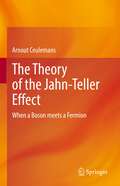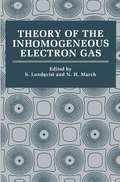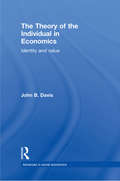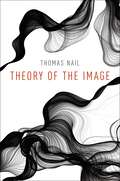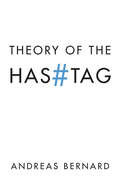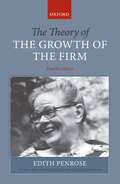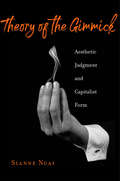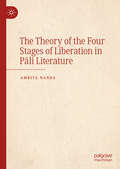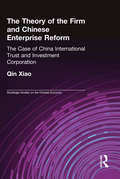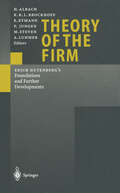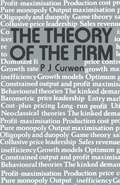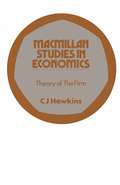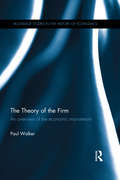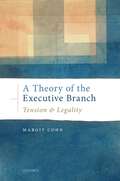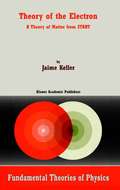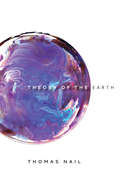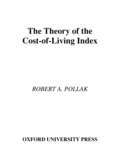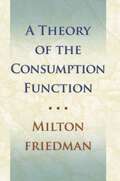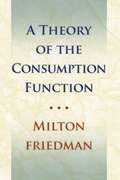- Table View
- List View
The Theory of the Jahn-Teller Effect: When a Boson meets a Fermion
by Arnout CeulemansThis book provides a comprehensive discussion of the Jahn-Teller Effect (JTE), focusing on the boson-fermion interaction. While current research is concerned with measuring and calculating ever more sophisticated and complex manifestations of the JT effect, the present volume takes away the epicycles of the theory and focuses on the symmetry dilemma at its core. When fermions and bosons meet, they get entangled and form a new dynamic reality. According to the rules of Molecular Symmetry, this reality is limited to a small set of patterns, with degeneracy cardinalities: 2, 3, 4, 5, and 6. The novelty of the book is that it adopts a unique mathematical technique, known as the Bargmann-Fock representation, and treats all degeneracies in detail. So far, this method was only applied to the simplest doublet case therefore its extension to the entire range of cases offers a new unified perspective. This volume will help the reader acquire a clear understanding of the JT effect, discover its universal mechanism and it will be a great tool for researchers and graduates working on this topic.
Theory of the Inhomogeneous Electron Gas (Physics of Solids and Liquids)
by Stig Lundqvist Norman H. MarchThe theory of the inhomogeneous electron gas had its origin in the Thomas Fermi statistical theory, which is discussed in the first chapter of this book. This already leads to significant physical results for the binding energies of atomic ions, though because it leaves out shell structure the results of such a theory cannot reflect the richness of the Periodic Table. Therefore, for a long time, the earlier method proposed by Hartree, in which each electron is assigned its own personal wave function and energy, dominated atomic theory. The extension of the Hartree theory by Fock, to include exchange, had its parallel in the density description when Dirac showed how to incorporate exchange in the Thomas-Fermi theory. Considerably later, in 1951, Slater, in an important paper, showed how a result similar to but not identical with that of Dirac followed as a simplification of the Hartree-Fock method. It was Gombas and other workers who recognized that one could also incorporate electron correlation consistently into the Thomas-Fermi-Dirac theory by using uniform electron gas relations locally, and progress had been made along all these avenues by the 1950s.
The Theory of the Individual in Economics: Identity and Value (Routledge Advances In Social Economics Ser.)
by John B DavisThe concept of the individual and his/her motivations is a bedrock of philosophy. All strands of thought at heart come down to a particular theory of the individual. Economics, though, is guilty of taking this hugely important concept without questioning how we theorise it. This superb book remedies this oversight.The new approach put forward by Da
The Theory of the Individual in Economics: Identity and Value
by John B DavisThe concept of the individual and his/her motivations is a bedrock of philosophy. All strands of thought at heart come down to a particular theory of the individual. Economics, though, is guilty of taking this hugely important concept without questioning how we theorise it. This superb book remedies this oversight.The new approach put forward by Da
THEORY OF THE IMAGE C
by Thomas NailWe live in an age of the mobile image. The world today is absolutely saturated with images of all kinds circulating around the world at an incredible rate. The movement of the image has never been more extraordinary than it is today. This recent kinetic revolution of the image has enormous consequences not only for the way we think about contemporary art and aesthetics but also for art history as well. Responding to this historical moment, Theory of the Image offers a fresh new theory and history of art from the perspective of this epoch-defining mobility. The image has been understood in many ways, but it is rarely understood to be fundamentally in motion. The original and materialist approach is what defines Theory of the Image and what allows it to offer the first kinetic history of the Western art tradition. In this book, Thomas Nail further develops his larger philosophy of movement into a comprehensive "kinesthetic" of the moving image from prehistory to the present. The book concludes with a vivid analysis of the contemporary digital image and its hybridity, ultimately outlining new territory for research and exploration across aesthetics, art history, cultural theory, and media studies.
Theory of the Image
by Thomas NailWe live in an age of the mobile image. The world today is absolutely saturated with images of all kinds circulating around the world at an incredible rate. The movement of the image has never been more extraordinary than it is today. This recent kinetic revolution of the image has enormous consequences not only for the way we think about contemporary art and aesthetics but also for art history as well. Responding to this historical moment, Theory of the Image offers a fresh new theory and history of art from the perspective of this epoch-defining mobility. The image has been understood in many ways, but it is rarely understood to be fundamentally in motion. The original and materialist approach is what defines Theory of the Image and what allows it to offer the first kinetic history of the Western art tradition. In this book, Thomas Nail further develops his larger philosophy of movement into a comprehensive "kinesthetic" of the moving image from prehistory to the present. The book concludes with a vivid analysis of the contemporary digital image and its hybridity, ultimately outlining new territory for research and exploration across aesthetics, art history, cultural theory, and media studies.
Theory of the Hashtag
by Andreas BernardThis is a short book about the most prominent sign of our times. The simple # sign is now used so widely that it is easy to overlook the fundamental effects it has had in the structuring of public debate. With its help, statements are bundled together and discourse is organized and amplified around common buzzwords. This method enables us to navigate more easily the huge volume of online utterances, but it also increases the risk of leveling statements and extinguishing difference, as exemplified by the #MeToo debate. Andreas Bernard traces the young and spectacular career of the humble hashtag. He follows the history of the # sign, documenting its use by Twitter and Instagram, and then examines the most prominent contemporary domains of the sign in socio-political activism and in marketing – two apparently very different fields which are united in their passion for the hashtag. Theory of the Hashtag shines a bright light on a small but pervasive feature of our contemporary digital culture and shows how it is surreptitiously shaping the public sphere.
Theory of the Hashtag
by Andreas BernardThis is a short book about the most prominent sign of our times. The simple # sign is now used so widely that it is easy to overlook the fundamental effects it has had in the structuring of public debate. With its help, statements are bundled together and discourse is organized and amplified around common buzzwords. This method enables us to navigate more easily the huge volume of online utterances, but it also increases the risk of leveling statements and extinguishing difference, as exemplified by the #MeToo debate. Andreas Bernard traces the young and spectacular career of the humble hashtag. He follows the history of the # sign, documenting its use by Twitter and Instagram, and then examines the most prominent contemporary domains of the sign in socio-political activism and in marketing – two apparently very different fields which are united in their passion for the hashtag. Theory of the Hashtag shines a bright light on a small but pervasive feature of our contemporary digital culture and shows how it is surreptitiously shaping the public sphere.
The Theory of the Growth of the Firm
by Edith PenroseThere are not many books that are genuine classics, and only a handful in business and management whose insights and ideas last for 50 years and more. This book is one of the very few 'must reads' for anybody seriously interested in the role of management within the firm. Originally published in 1959, The Theory of the Growth of the Firm has illuminated and inspired thinking in strategy, entrepreneurship, knowledge creation, and innovation. Edith Penrose's tightly-argued classic laid the foundations for the resource based view of the firm, now the dominant framework in business strategy. She analyses managerial activities and decisions, organizational routines, and also the factors that inevitably limit a firm's growth prospects. For this new anniversary edition, Christos Pitelis has written a new introduction which both tells the story of Penrose's extraordinary life, and provides a balanced assessment of her key ideas and their continuing relevance and freshness.
Theory of the Gimmick: Aesthetic Judgment and Capitalist Form
by Sianne NgaiA provocative theory of the gimmick as an aesthetic category steeped in the anxieties of capitalism. Repulsive and yet strangely attractive, the gimmick is a form that can be found virtually everywhere in capitalism. It comes in many guises: a musical hook, a financial strategy, a striptease, a novel of ideas. Above all, acclaimed theorist Sianne Ngai argues, the gimmick strikes us both as working too little (a labor-saving trick) and as working too hard (a strained effort to get our attention). Focusing on this connection to work, Ngai draws a line from gimmicks to political economy. When we call something a gimmick, we are registering uncertainties about value bound to labor and time—misgivings that indicate broader anxieties about the measurement of wealth in capitalism. With wit and critical precision, Ngai explores the extravagantly impoverished gimmick across a range of examples: the fiction of Thomas Mann, Helen DeWitt, and Henry James; photographs by Torbjørn Rødland; the video art of Stan Douglas; the theoretical writings of Stanley Cavell and Theodor Adorno. Despite its status as cheap and compromised, the gimmick emerges as a surprisingly powerful tool in this formidable contribution to aesthetic theory.
The Theory of the Four Stages of Liberation in Pāli Literature
by Amrita NandaThis book investigates the origins and development of the theory of four stages of liberation in Pāli literature. This theory is an important soteriological cartography in early Buddhism, particularly Theravāda Buddhism. Amrita Nanda challenges the traditional interpretation of the four stages by recognizing the impact of the changing socio-religious factors on the theory’s origins and subsequent development. Based primarily on the Pali literary sources, this study utilizes sometimes-overlooked aspects of these texts. This book first traces the origins of each stage individually; then, it traces the formation of the theory and its subsequent development.
The Theory of the Firm and Chinese Enterprise Reform: The Case of China International Trust and Investment Corporation (Routledge Studies on the Chinese Economy)
by Xiao QinChanges to corporate structure, including the role of the corporate headquarters, have been key factors in bringing about economic reform in China. In this penetrating and insightful book, Xiao questions the conventional theory of the firm, arguing that the ultimate goal of the headquarters of modern large corporations is to function as a substitute for the market, and introducing a new explanation for the nature of the firm - the 'substitution function model'. He provides an insider's account of the reforms in CITIC, a rare narrative that should be essential reading for scholars and practitioners who care about the theory and practice of the firm, in particular in the context of Chinese enterprise reform.
The Theory of the Firm and Chinese Enterprise Reform: The Case of China International Trust and Investment Corporation (Routledge Studies on the Chinese Economy)
by Xiao QinChanges to corporate structure, including the role of the corporate headquarters, have been key factors in bringing about economic reform in China. In this penetrating and insightful book, Xiao questions the conventional theory of the firm, arguing that the ultimate goal of the headquarters of modern large corporations is to function as a substitute for the market, and introducing a new explanation for the nature of the firm - the 'substitution function model'. He provides an insider's account of the reforms in CITIC, a rare narrative that should be essential reading for scholars and practitioners who care about the theory and practice of the firm, in particular in the context of Chinese enterprise reform.
Theory of the Firm: Erich Gutenberg’s Foundations and Further Developments
by H. Albach K. Brockhoff E. Eymann P. Jungen M. Steven A. LuhmerThis book has an objective and a focus. It provides the reader with: • an in-depth acquaintance with the theory of the firm developed by Erich Gutenberg • an insight into a coherent body of current German research in the theory of the firm. The book is divided into two parts. The first part lays the foundations. It presents Gutenberg's theory of the firm to the English speaking reader. Considering the great importance that Erich Gutenberg has had in Germany and taking into consideration the impact that the translations of his path-breaking three volumes "Principles of Management" have had in France, the Spanish speaking countries, and in Japan, it was felt that it was necessary, on the occasion of his tOOth anniversary, to present a concise summary of his contributions to the theory of the firm to an English speaking scientific community. Six papers present Gutenberg's theory in the light of the theoretical advances that he stimulated as well as in the framework of other theoretical developments like capital market theory, transaction cost theory, principal agent theory, and contract theory. The papers show that Gutenberg's theory is highly relevant for theory and highly influential in the practice of management.
The Theory of the Firm: An overview of the economic mainstream (Routledge Studies in the History of Economics)
by Paul WalkerFirms are a ubiquitous feature of the economic landscape, with much of the activity undertaken within an economy taking place within their boundaries. Given the size of the contribution made by firms to economic activity, employment and growth, having a theoretical understanding of the nature and structure of firms is crucial for understanding how an economy functions. The Theory of the Firm firstly offers a brief overview of the past, consisting of a concise discussion of the classical view of production, followed by an outline of the development of the neoclassical - or ‘textbook’ - approach to firm level production. Secondly, the ‘present’ of the theory of the firm is discussed in three sections. The first section considers the post-1970 theory of the firm literature per se, while the second section scrutinises the relationship between the three most prominent of the modern sets of theories: the reference point, property rights and transaction cost approaches. The third section looks at the theory of privatisation. The unique aspects of this book includes its discussions of the post-1970 contributions to the theory of the firm; the integration of the theory of the entrepreneur with the theory of the firm; and the theory of privatisation. This volume offers an intuitive introduction to the theories of the firm as well as simple formal models of the most important contributions to the literature. It also outlines the historical evolution of the traditional and modern theories of the firm. This book is of great interest to those who study history of economic thought, industrial economics and organizational studies.
The Theory of the Firm: An overview of the economic mainstream (Routledge Studies in the History of Economics)
by Paul WalkerFirms are a ubiquitous feature of the economic landscape, with much of the activity undertaken within an economy taking place within their boundaries. Given the size of the contribution made by firms to economic activity, employment and growth, having a theoretical understanding of the nature and structure of firms is crucial for understanding how an economy functions. The Theory of the Firm firstly offers a brief overview of the past, consisting of a concise discussion of the classical view of production, followed by an outline of the development of the neoclassical - or ‘textbook’ - approach to firm level production. Secondly, the ‘present’ of the theory of the firm is discussed in three sections. The first section considers the post-1970 theory of the firm literature per se, while the second section scrutinises the relationship between the three most prominent of the modern sets of theories: the reference point, property rights and transaction cost approaches. The third section looks at the theory of privatisation. The unique aspects of this book includes its discussions of the post-1970 contributions to the theory of the firm; the integration of the theory of the entrepreneur with the theory of the firm; and the theory of privatisation. This volume offers an intuitive introduction to the theories of the firm as well as simple formal models of the most important contributions to the literature. It also outlines the historical evolution of the traditional and modern theories of the firm. This book is of great interest to those who study history of economic thought, industrial economics and organizational studies.
A Theory of the Executive Branch: Tension and Legality
by Margit CohnThe executive branch in Western democracies has been granted a virtually impossible task: expected to 'imperially' direct the life of the nation through thick and thin, it is concurrently required to be subservient to legislation meted out by a sovereign parliament. Drawing on a general argument from constitutional theory that prioritizes dispersal of power over concepts of hierarchy, this book argues that the tension between dominance and submission in the executive branch is maintained by the adoption of various forms of fuzziness, under which a guise of legality masks the absence of substantive limitation of power. Under this 'internal tension' vision of constitutionalism, the executive branch is simultaneously submissive to law and dominant over it, while concepts of substantive legality are compromised. Building on legal and political science research, this volume classifies and analyses thirteen forms of fuzziness, ranging from open-ended or semi-written constitutions to unapplied legislation. The study of this unavoidable yet problematic feature of the public sphere is addressed descriptively and normatively. Adding detailed examples from two fields of law - emergency law and air-pollution law - in two systems (the UK and the US), the book ends with a call for raising the threshold of judicial review, grounded in theories of participatory and deliberative democracy. This book addresses an area that is surprisingly under-researched. Despite the increase in executive power across democratic polities and increasing public interest in the executive branch and executive powers, this much-needed book offers a theoretical foundation that should ground all analysis of arguably the most powerful branch of modern government.
A Theory of the Executive Branch: Tension and Legality
by Margit CohnThe executive branch in Western democracies has been granted a virtually impossible task: expected to 'imperially' direct the life of the nation through thick and thin, it is concurrently required to be subservient to legislation meted out by a sovereign parliament. Drawing on a general argument from constitutional theory that prioritizes dispersal of power over concepts of hierarchy, this book argues that the tension between dominance and submission in the executive branch is maintained by the adoption of various forms of fuzziness, under which a guise of legality masks the absence of substantive limitation of power. Under this 'internal tension' vision of constitutionalism, the executive branch is simultaneously submissive to law and dominant over it, while concepts of substantive legality are compromised. Building on legal and political science research, this volume classifies and analyses thirteen forms of fuzziness, ranging from open-ended or semi-written constitutions to unapplied legislation. The study of this unavoidable yet problematic feature of the public sphere is addressed descriptively and normatively. Adding detailed examples from two fields of law - emergency law and air-pollution law - in two systems (the UK and the US), the book ends with a call for raising the threshold of judicial review, grounded in theories of participatory and deliberative democracy. This book addresses an area that is surprisingly under-researched. Despite the increase in executive power across democratic polities and increasing public interest in the executive branch and executive powers, this much-needed book offers a theoretical foundation that should ground all analysis of arguably the most powerful branch of modern government.
Theory of the Electron: A Theory of Matter from START (Fundamental Theories of Physics #115)
by J. KellerIn the first century after its discovery, the electron has come to be a fundamental element in the analysis of physical aspects of nature. This book is devoted to the construction of a deductive theory of the electron, starting from first principles and using a simple mathematical tool, geometric analysis. Its purpose is to present a comprehensive theory of the electron to the point where a connection can be made with the main approaches to the study of the electron in physics. The introduction describes the methodology. Chapter 2 presents the concept of space-time-action relativity theory and in chapter 3 the mathematical structures describing action are analyzed. Chapters 4, 5, and 6 deal with the theory of the electron in a series of aspects where the geometrical analysis is more relevant. Finally in chapter 7 the form of geometrical analysis used in the book is presented to elucidate the broad range of topics which are covered and the range of mathematical structures which are implicitly or explicitly included. The book is directed to two different audiences of graduate students and research scientists: primarily to theoretical physicists in the field of electron physics as well as those in the more general field of quantum mechanics, elementary particle physics, and general relativity; secondly, to mathematicians in the field of geometric analysis.
Theory of the Earth
by Thomas NailWe need a new philosophy of the earth. Geological time used to refer to slow and gradual processes, but today we are watching land sink into the sea and forests transform into deserts. We can even see the creation of new geological strata made of plastic, chicken bones, and other waste that could remain in the fossil record for millennia or longer. Crafting a philosophy of geology that rewrites natural and human history from the broader perspective of movement, Thomas Nail provides a new materialist, kinetic ethics of the earth that speaks to this moment. Climate change and other ecological disruptions challenge us to reconsider the deep history of minerals, atmosphere, plants, and animals and to take a more process-oriented perspective that sees humanity as part of the larger cosmic and terrestrial drama of mobility and flow. Building on his earlier work on the philosophy of movement, Nail argues that we should shift our biocentric emphasis from conservation to expenditure, flux, and planetary diversity. Theory of the Earth urges us to rethink our ethical relationship to one another, the planet, and the cosmos at large.
The Theory of the Cost-of-Living Index
by Robert A. PollakProviding a valuable resource for government economists, academics, and research libraries, this volume contains twelve papers by Robert Pollak--four previously unpublished--that explore the theory of the cost of living index. In addition to Pollak's classic paper, "The Theory of the Cost of Living Index," the volume includes papers on subindexes, the intertemporal cost of living index, welfare comparisons and equivalence scales, the social cost of living index, the treatment of "quality," and consumer durables in the cost of living index.
Theory of the Consumption Function (PDF)
by Milton FriedmanWhat is the exact nature of the consumption function? Can this term be defined so that it will be consistent with empirical evidence and a valid instrument in the hands of future economic researchers and policy makers? In this volume a distinguished American economist presents a new theory of the consumption function, tests it against extensive statistical J material and suggests some of its significant implications. Central to the new theory is its sharp distinction between two concepts of income, measured income, or that which is recorded for a particular period, and permanent income, a longer-period concept in terms of which consumers decide how much to spend and how much to save. Milton Friedman suggests that the total amount spent on consumption is on the average the same fraction of permanent income, regardless of the size of permanent income. The magnitude of the fraction depends on variables such as interest rate, degree of uncertainty relating to occupation, ratio of wealth to income, family size, and so on. The hypothesis is shown to be consistent with budget studies and time series data, and some of its far-reaching implications are explored in the final chapter.
Theory of the Consumption Function
by Milton FriedmanWhat is the exact nature of the consumption function? Can this term be defined so that it will be consistent with empirical evidence and a valid instrument in the hands of future economic researchers and policy makers? In this volume a distinguished American economist presents a new theory of the consumption function, tests it against extensive statistical J material and suggests some of its significant implications. Central to the new theory is its sharp distinction between two concepts of income, measured income, or that which is recorded for a particular period, and permanent income, a longer-period concept in terms of which consumers decide how much to spend and how much to save. Milton Friedman suggests that the total amount spent on consumption is on the average the same fraction of permanent income, regardless of the size of permanent income. The magnitude of the fraction depends on variables such as interest rate, degree of uncertainty relating to occupation, ratio of wealth to income, family size, and so on. The hypothesis is shown to be consistent with budget studies and time series data, and some of its far-reaching implications are explored in the final chapter.
